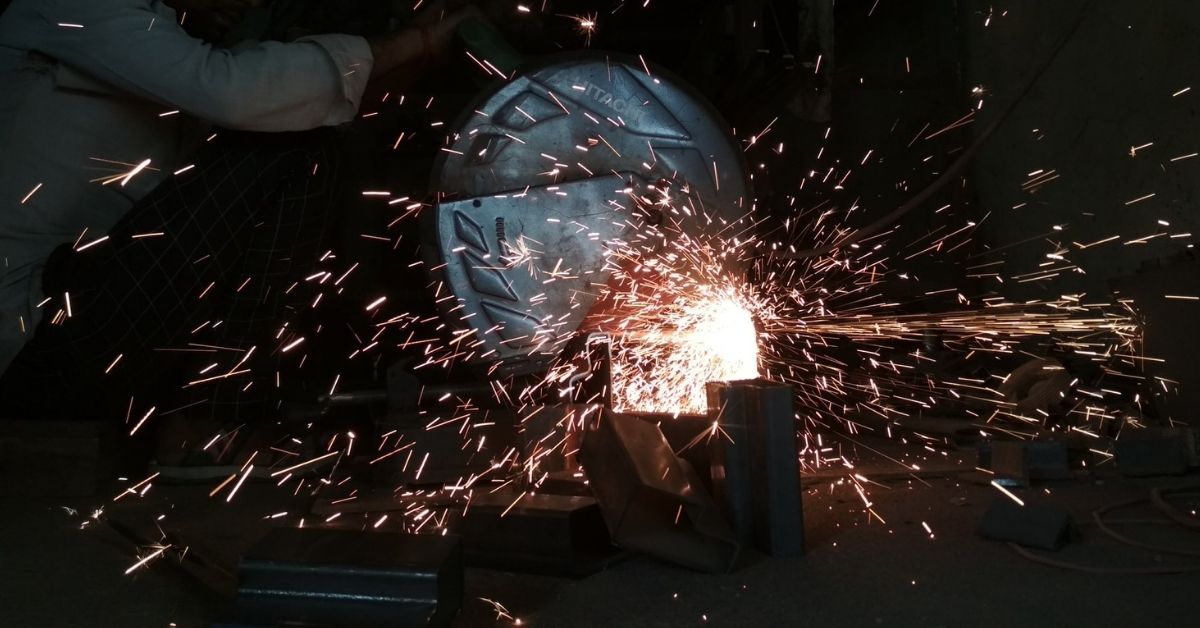Share

Bandsaw blades are the most important part of your bandsaw. They are what allow you to cut through different materials, and if they become dull or broken, it can be difficult to complete projects.
When this happens, it is time for a new band saw blade! But first things first, you need to know how to weld bandsaw blades together correctly. This blog post will provide 7 helpful tips on how to do that!
How to Weld Bandsaw Blades
Tip 1: Know The Type of Blade
Knowing the type of blade you are welding is important. There are blades designed for general use, blades designed specifically for wood, and blades designed specifically for metal. Moreover, blades come in different widths and thicknesses, so ensure you have the right blade for the job.
Tip 2: Clean The Blade
Any dirt or debris on the blade will create a poor weld. Make sure to clean the blade before beginning to weld.
Tip 3: Use A High-Quality Welding Rod For The Blade
A high-quality welding rod will make a cleaner, stronger weld. If you want to ensure the best quality of your blade’s welds, then use a good wire that isn’t going to break down during the process or leave residue on your finished product.
Tip 4: Make Sure You’re Using Good Wire Size And Voltage
The amount of voltage and size of wire needed for different blades varies from saw to saw. In order to achieve consistent results every time, though, it is important that you have an idea about what kind of result each variable produces so that when something doesn’t go right you know which one needs adjustment next time around. This way, future adjustments to your welding process will be minor.
Tip 5: Preheat The Blade
Preheating the blade before welding it helps to avoid warping and makes the weld stronger.
Tip 6: Tack Weld The Ends First
Welding the ends of the blade first will help to hold the shape of the blade while you’re welding the middle. This is an important step, especially if you are not using a jig or vice to keep the blade in place. If you skip this step, there’s a good chance that your welds will not be consistent and you could end up with a crooked blade.
Tip 7: Use A Jig Or Vice To Hold The Blade In Place
If possible, use a jig or vice to hold the blade in place while you are welding. This will help ensure that your welds are straight and even across the length of the blade.
Common Mistakes People Make in Welding A Bandsaw Blades
1. Not Using The Right Welder
When welding a bandsaw blade, you want to use the right welder for the job. If you don’t have the right welder, it could end up costing you more time and money in the long run.
2. Not Preparing The Blade Properly
Before welding a bandsaw blade, it is important that you prepare it properly. This includes cleaning off all of the old paint or rust and making sure there is no debris on the blade.
3. Welding In A Hurry
Welding a bandsaw blade takes patience and precision. Trying to weld it too quickly can lead to mistakes and poor welds.
4. Not Measuring Twice, Cutting Once
Welding a bandsaw blade, it is important to measure twice and cut once. This will help ensure that the blade is cut evenly and correctly.
5. Welding In The Wrong Position
When welding a bandsaw blade, you want to make sure you are welding in the right position. If you weld in the wrong position, it can lead to poor welds and potential damage to your saw.
6. Not Using A Filler Material
When welding a bandsaw blade, it is important to use a filler material. This will help strengthen the weld and protect against corrosion.
7. Not Cleaning Up Afterward
Welding a bandsaw blade can be messy work. Make sure you clean up afterward so you don’t create a safety hazard or damage your equipment.



0 Comments